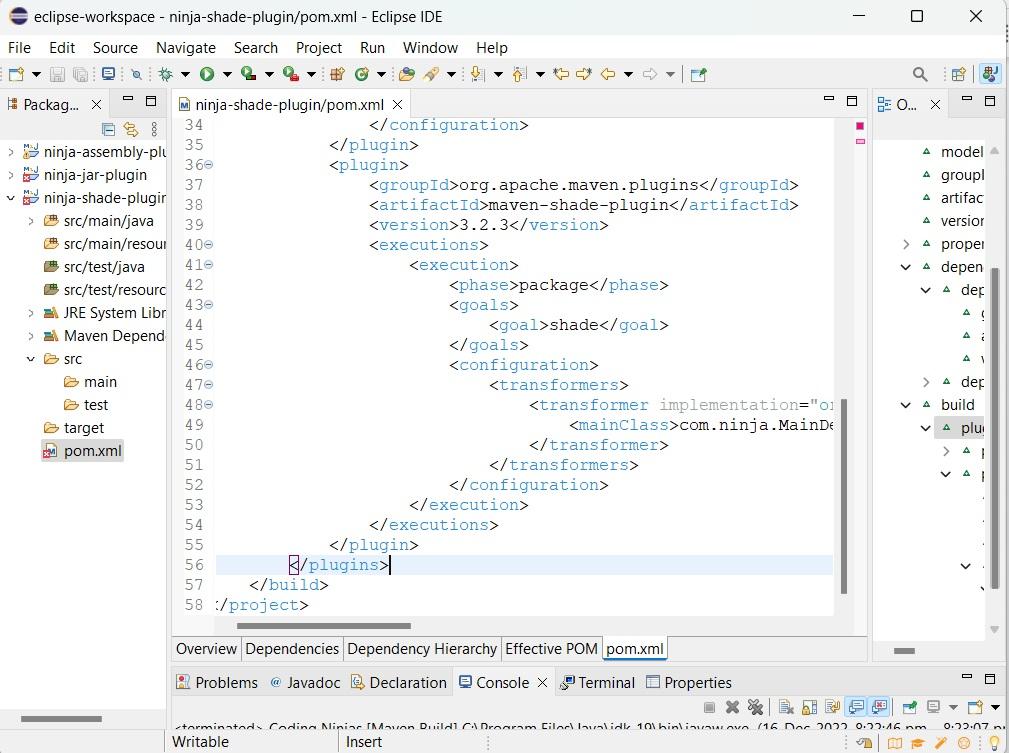Maven Shade Plugin: A Comprehensive Guide To Creating Uber JARs
The Maven Shade Plugin is an essential tool for developers who want to create a single executable JAR file that contains all the dependencies of their project. In the world of Java development, managing dependencies can often be a daunting task. With numerous libraries and frameworks available, it's crucial to ensure that all required components are packaged together seamlessly. This is where the Maven Shade Plugin comes into play, providing an efficient solution to bundle your application into a single, runnable JAR file.
This article will delve into the Maven Shade Plugin, exploring its features, benefits, and how to implement it in your projects. Whether you're a seasoned developer or new to the world of Maven, this guide aims to equip you with the knowledge you need to leverage this powerful tool effectively.
We will cover various aspects, including the basics of Maven, how the Shade Plugin works, common use cases, and advanced configurations. By the end of this article, you will have a thorough understanding of how to utilize the Maven Shade Plugin to streamline your Java development process.
Table of Contents
- What is Maven?
- Understanding the Maven Shade Plugin
- Installation and Setup
- Basic Usage of Maven Shade Plugin
- Advanced Configuration Options
- Common Use Cases for Maven Shade Plugin
- Troubleshooting Common Issues
- Conclusion
What is Maven?
Maven is a powerful project management and comprehension tool that is primarily used for Java projects. It provides developers with a comprehensive framework for managing project builds, dependencies, and documentation. Here are some key features of Maven:
- Dependency Management: Simplifies the process of including libraries and frameworks in your project.
- Build Automation: Automates the build process, allowing for consistent and repeatable builds.
- Project Structure: Encourages a standard project layout that enhances collaboration and maintainability.
Benefits of Using Maven
Using Maven has numerous benefits, including:
- Improved productivity through automation.
- Clear dependency management that reduces version conflicts.
- Ease of integration with various IDEs and CI/CD tools.
Understanding the Maven Shade Plugin
The Maven Shade Plugin is a powerful feature of Maven that allows developers to create an "uber" JAR file. An uber JAR is a JAR file that packages not only your application code but also all of its dependencies into a single file. This makes it easy to distribute and run Java applications.
Key Features of the Maven Shade Plugin
- Dependency Bundling: Automatically includes all required dependencies in the final JAR.
- Relocation: Allows you to relocate classes to avoid conflicts between libraries.
- Filtering: Excludes unnecessary files from the final JAR to reduce size.
Installation and Setup
To use the Maven Shade Plugin, you need to add it to your project's POM file. Here’s how to do it:
org.apache.maven.plugins maven-shade-plugin 3.2.4
Basic Usage of Maven Shade Plugin
After installing the plugin, you can create an uber JAR by running the following command:
mvn clean package
This command will generate a JAR file in the target directory that includes all dependencies. By default, the output file will be named after your project, with the suffix '-shaded'.
Executing the Uber JAR
Once you have your shaded JAR file, you can run it using the command:
java -jar target/your-project-name-shaded.jar
Advanced Configuration Options
The Maven Shade Plugin offers a range of advanced configurations to customize the shading process further:
- Relocating Packages: You can relocate packages that may conflict with other libraries.
- Adding Resource Filters: Allows you to include or exclude specific resources in the shaded JAR.
- Creating an Executable JAR: You can specify the main class to make the JAR executable.
Sample Configuration
org.apache.maven.plugins maven-shade-plugin 3.2.4 package shade com.example.lib shaded.com.example.lib
Common Use Cases for Maven Shade Plugin
The Maven Shade Plugin is widely used across various scenarios in Java development:
- Microservices: Easily package microservices with all dependencies for deployment.
- Standalone Applications: Create standalone applications that can run without additional setup.
- Library Distribution: Bundle libraries for distribution while avoiding version conflicts.
Troubleshooting Common Issues
While using the Maven Shade Plugin, you may encounter some issues. Here are a few common problems and their solutions:
- Dependency Conflicts: Use the relocation feature to resolve version conflicts.
- Missing Resources: Ensure that the resource filtering is correctly configured.
- Execution Failures: Check for misconfigurations in the POM file.
Conclusion
In summary, the Maven Shade Plugin is an invaluable tool for Java developers looking to streamline their build process by creating uber JAR files. By understanding how to set up and configure the plugin, you can effectively manage your project's dependencies and create easily distributable applications.
We encourage you to experiment with the Maven Shade Plugin in your projects and see how it can improve your development workflow. If you found this article helpful, please leave a comment below, share it with your peers, or explore more articles on our site!
Thank you for reading, and we look forward to seeing you again!
The Art Of Dancing: A Journey Through Rhythm And Movement
Captivating Moments: A Comprehensive Look At The Iconic Pics Of Justin Bieber
Dancing Nathan: The Journey Of A Dance Sensation


